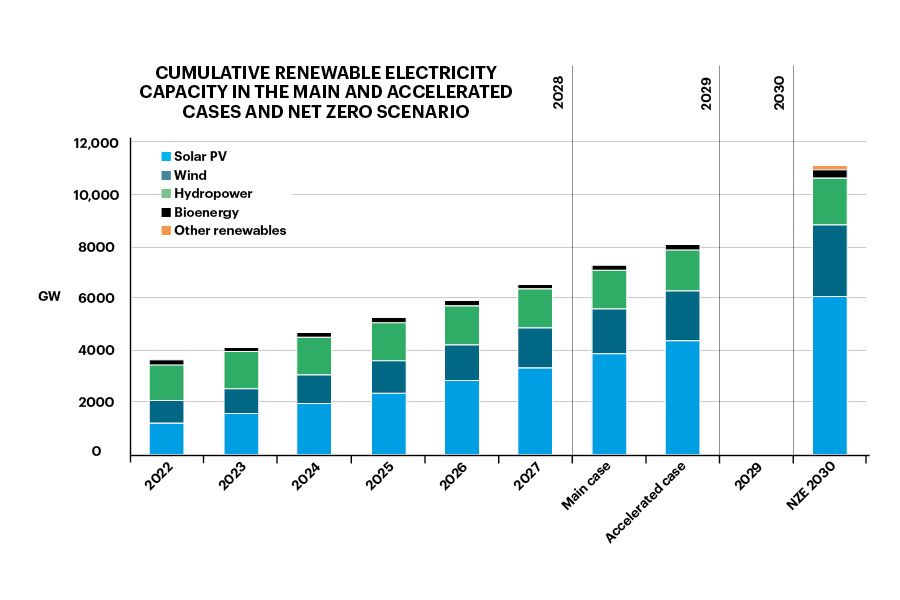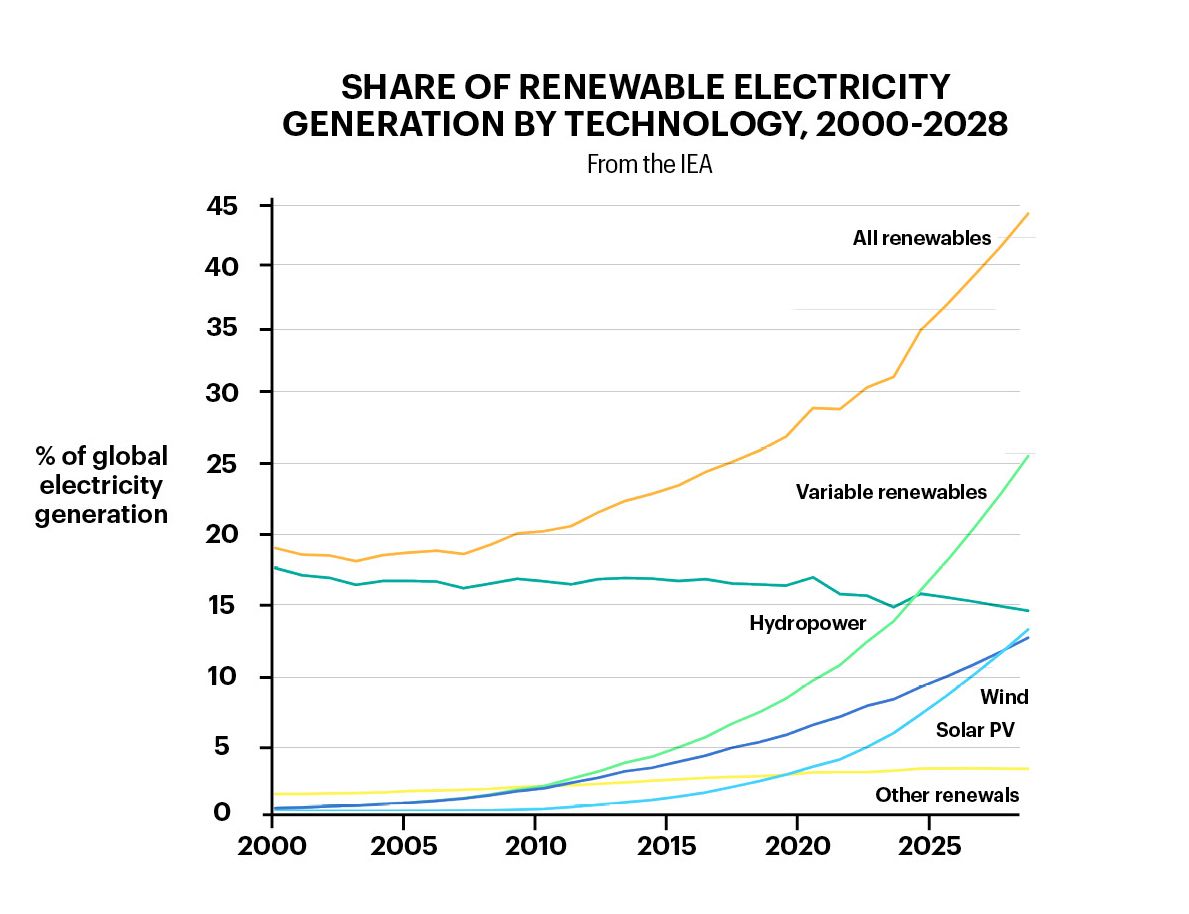The future of renewable technology
Our energy mix needs to change to ensure the continued future of our planet. But what technologies are on the cusp of adoption, and what is coming from the laboratories of the world’s most innovative thinkers? Chris Stokel-Walker looks at the future of renewable technology
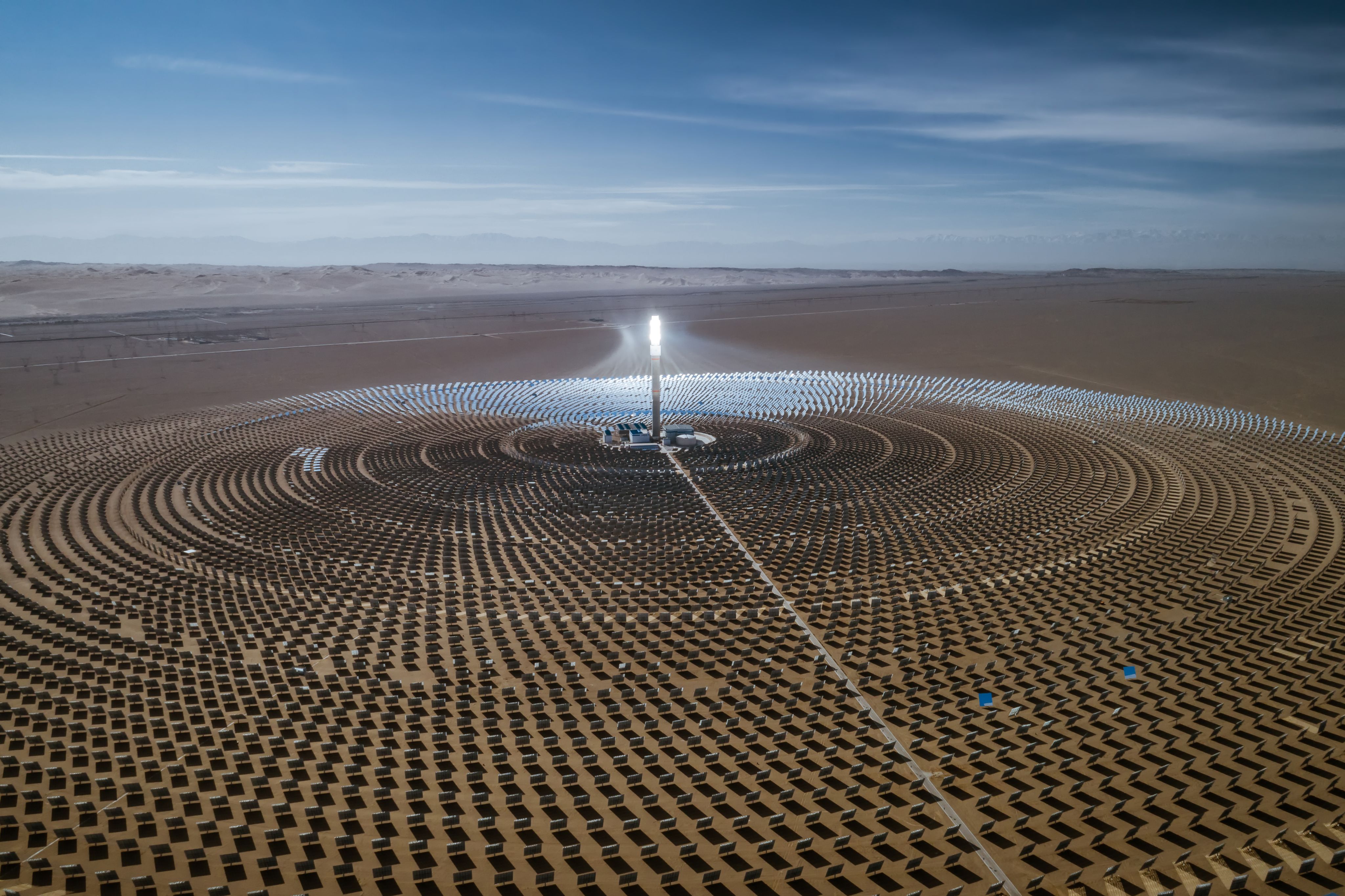

The world is changing fast, and our energy systems are in a race against time to save the planet. Decades and centuries of investment in, and use of, fossil fuels have powered our people to new prosperity and brought about industrial revolutions that have helped the engineering industry. But as for the planet, the impact has been more harmful.
Global warming continues to wreak havoc, while the climate crisis is in its full force. In recognition of this, the world has sought to make change. And things are speeding up.
The amount of new additions to renewable energy capacity reached the fastest growth rate in the last two decades in 2023, according to the International Energy Agency (IEA). Renewables have set records for 22 years in a row, the agency added. Last year, 510 gigawatts of capacity was added to the world’s energy sector – a much welcomed reprieve from the old ways of generating power. Much of that was in developed countries: G20 countries account for almost 90% of global renewable power capacity, according to the IEA. But it’s a challenge that will face us all.
“Climate change is the greatest social and environmental challenge the human race has ever faced,” says Dr Henna Bains, chief technology officer of Kinewell Energy, a British clean-tech energy company. “Regardless of the path to net zero, one thing is clear: we need a substantial increase in renewable electrical generation to decarbonise the power grid, and support electrification of other sectors.”
The world is changing fast, and our energy systems are in a race against time to save the planet. Decades and centuries of investment in, and use of, fossil fuels have powered our people to new prosperity and brought about industrial revolutions that have helped the engineering industry. But as for the planet, the impact has been more harmful.
Global warming continues to wreak havoc, while the climate crisis is in its full force. In recognition of this, the world has sought to make change. And things are speeding up.
The amount of new additions to renewable energy capacity reached the fastest growth rate in the last two decades in 2023, according to the International Energy Agency (IEA). Renewables have set records for 22 years in a row, the agency added. Last year, 510 gigawatts of capacity was added to the world’s energy sector – a much welcomed reprieve from the old ways of generating power. Much of that was in developed countries: G20 countries account for almost 90% of global renewable power capacity, according to the IEA. But it’s a challenge that will face us all.
“Climate change is the greatest social and environmental challenge the human race has ever faced,” says Dr Henna Bains, chief technology officer of Kinewell Energy, a British clean-tech energy company. “Regardless of the path to net zero, one thing is clear: we need a substantial increase in renewable electrical generation to decarbonise the power grid, and support electrification of other sectors.”
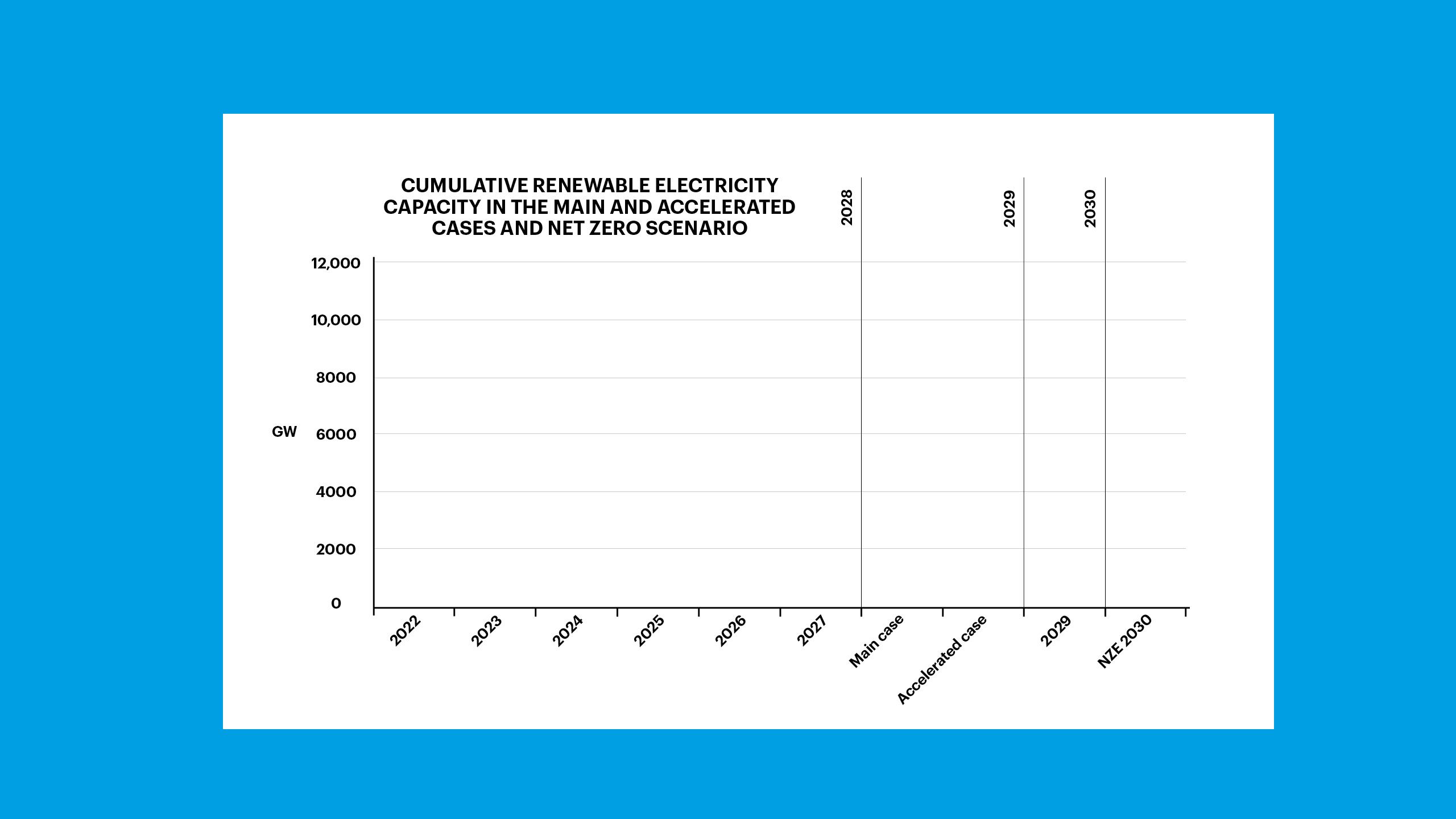

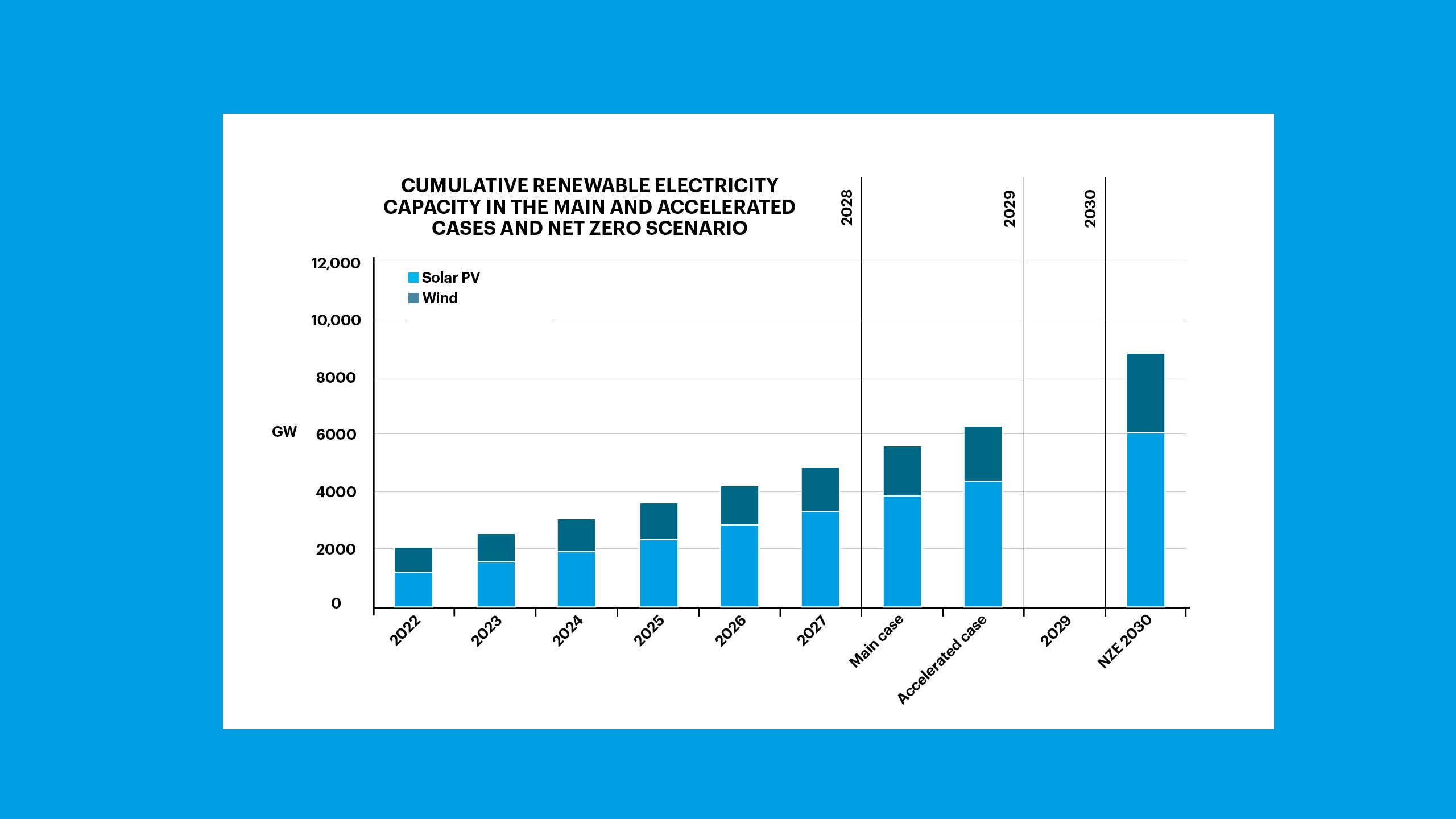
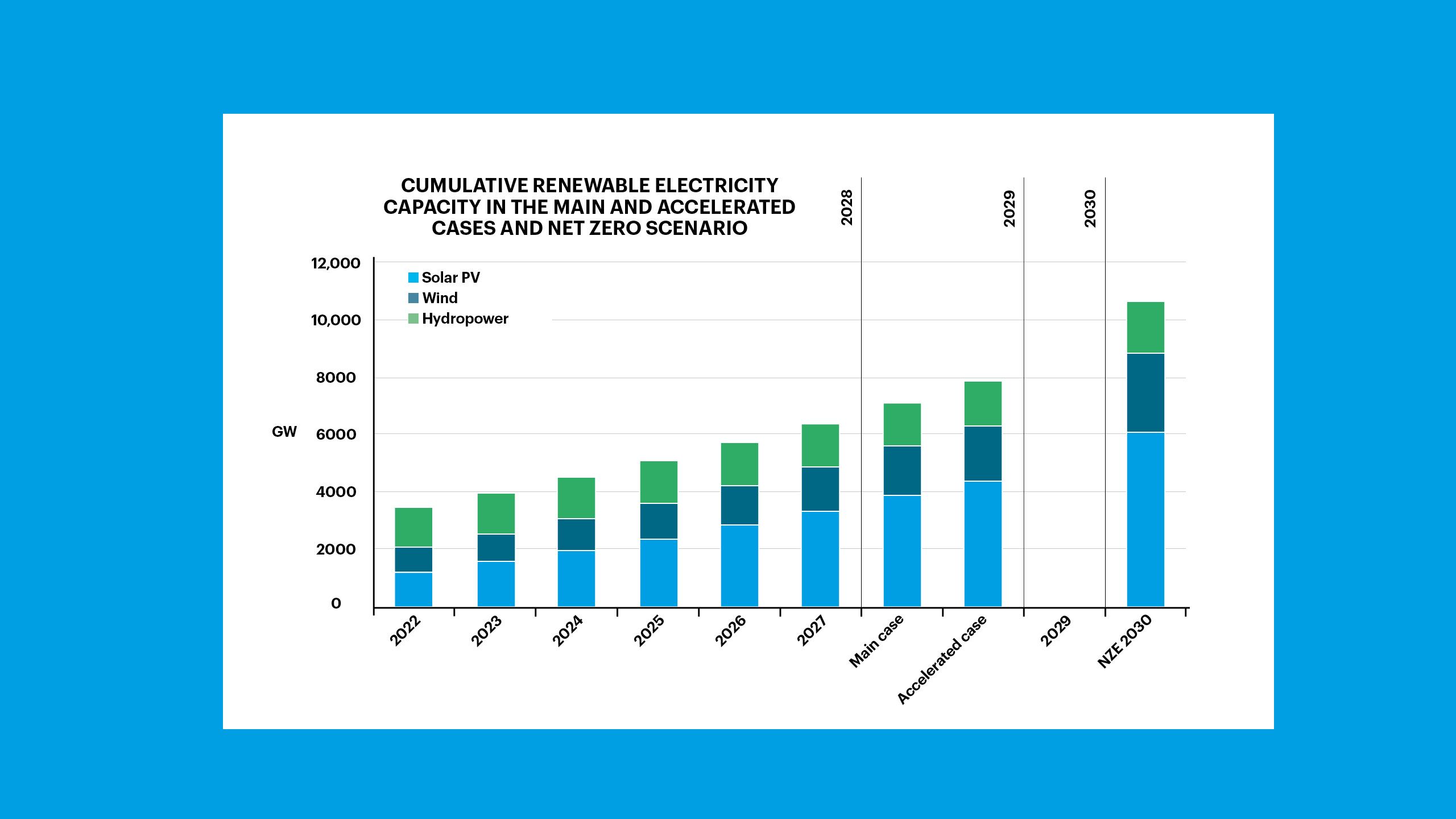
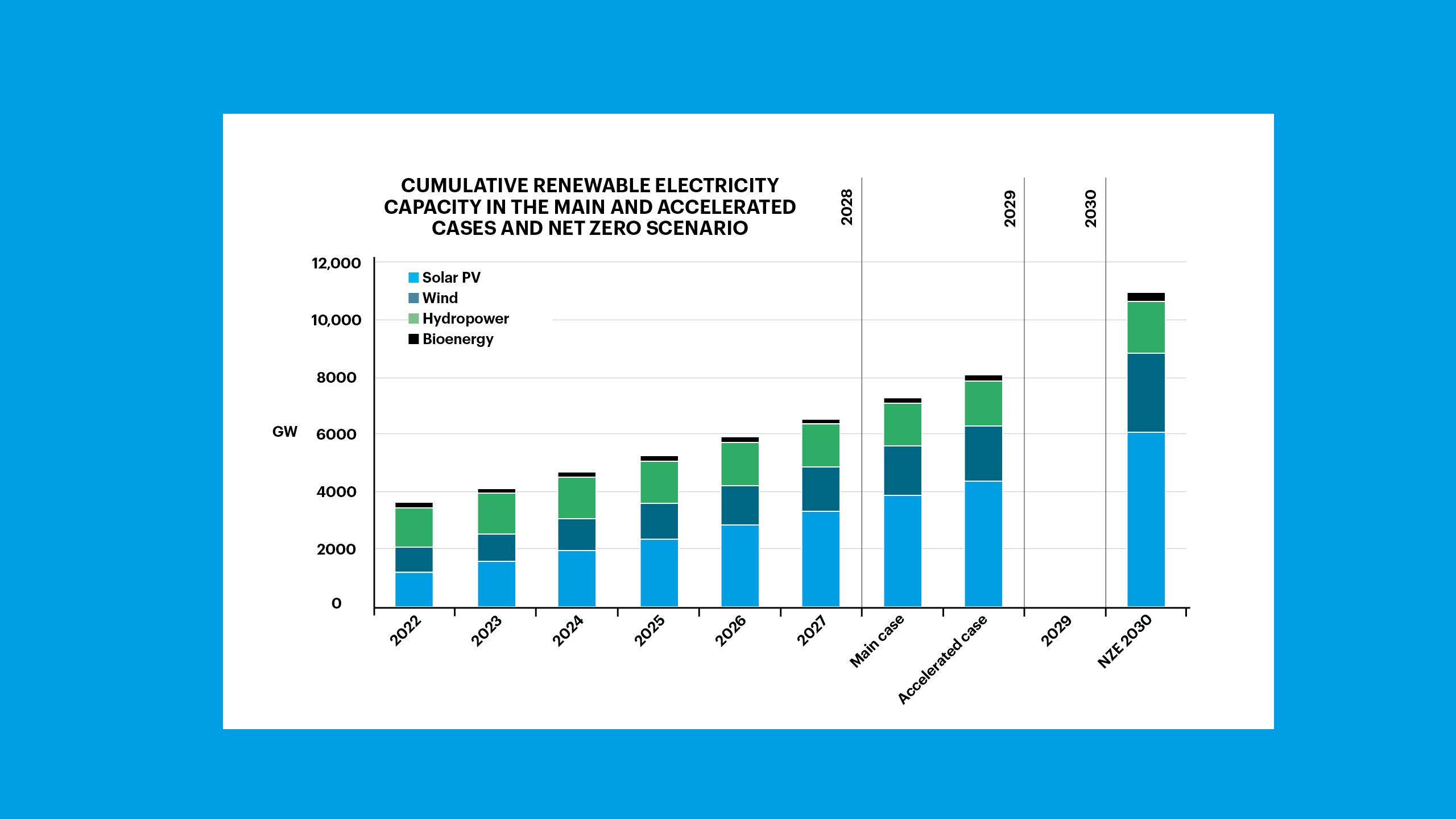
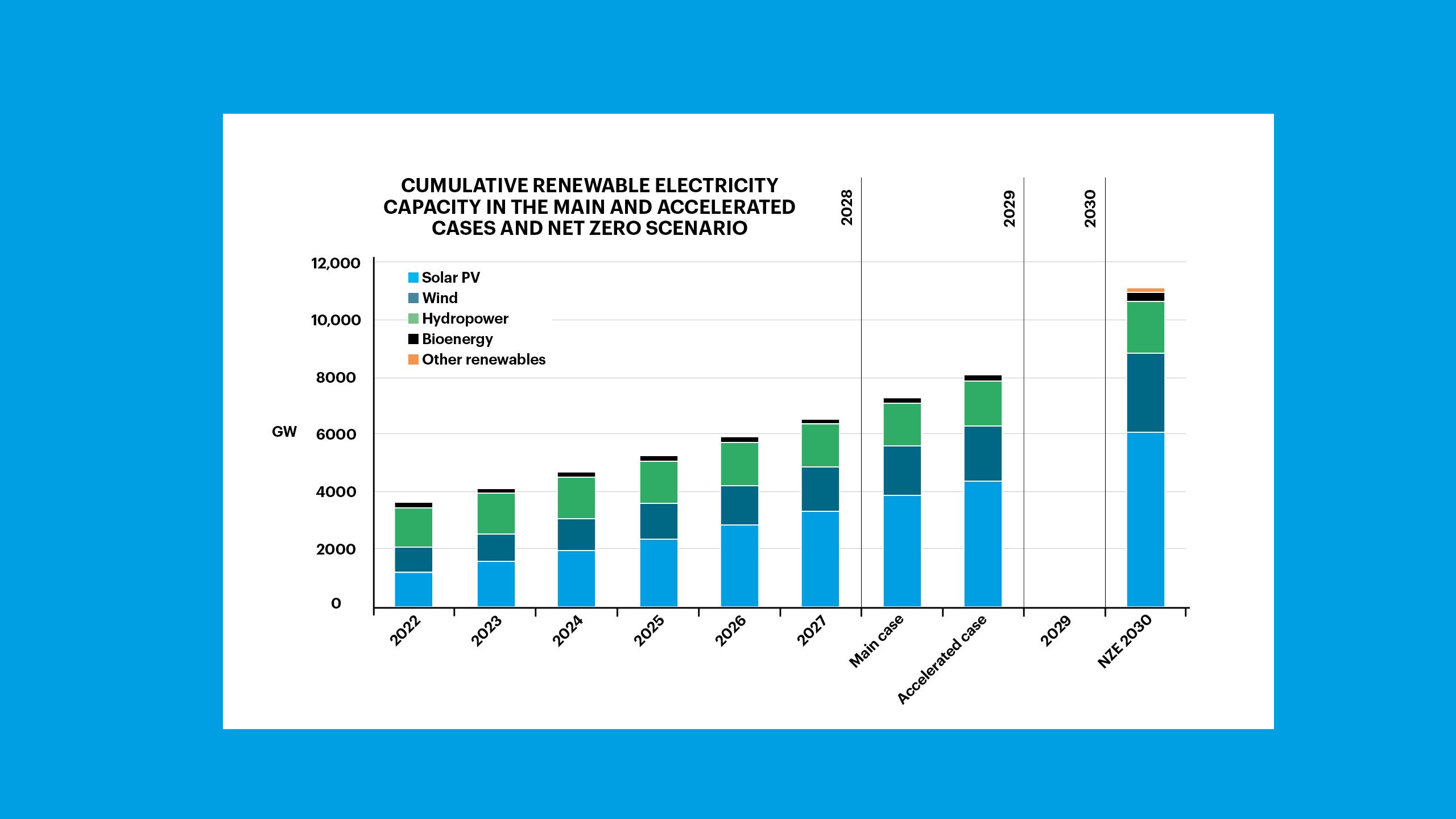
Innovation, innovation, innovation
When faced with such a significant challenge, new thinking is needed. The first commercial renewable energy power plant came online more than 100 years ago – an indication of just how long we’ve lived with the ability to use renewables in our energy mix. But the infrastructure we have won’t be able to meet the requirements of the energy transition needed through the existing list of renewable technologies we have without change.
Christophe Williams
Christophe Williams
“The UK can’t rely on the National Grid alone,” says Christophe Williams, CEO of Naked Energy, which develops solar thermal technology. “It is the oldest in the world and won’t be able to accommodate net zero by itself. We need to use grid-edge technologies such as solar heat to counteract the strain being added by new and increasing applications such as EVs and heat pumps. Without alternative solutions being considered, the transition to net zero won’t happen.”
Some of those new technologies are in the lab. Others are in the field. And yet more are somewhere in between development and commercialisation. But all are expected to help contribute to the boom in renewables, and the share of the global energy mix, that is expected to happen in the years to come.
We all know about the great strides being made in improving battery power and how that can help charge our future growth, but where else are we seeing innovation in renewable energy? What are the technologies of tomorrow that will help us reach the energy change we need?

British Library Installation. Dark blue is VirtuHOT, lighter blue is VirtuPVT
British Library Installation. Dark blue is VirtuHOT, lighter blue is VirtuPVT
Innovation, innovation, innovation
When faced with such a significant challenge, new thinking is needed. The first commercial renewable energy power plant came online more than 100 years ago – an indication of just how long we’ve lived with the ability to use renewables in our energy mix. But the infrastructure we have won’t be able to meet the requirements of the energy transition needed through the existing list of renewable technologies we have without change.
Christophe Williams
Christophe Williams
“The UK can’t rely on the National Grid alone,” says Christophe Williams, CEO of Naked Energy, which develops solar thermal technology. “It is the oldest in the world and won’t be able to accommodate net zero by itself. We need to use grid-edge technologies such as solar heat to counteract the strain being added by new and increasing applications such as EVs and heat pumps. Without alternative solutions being considered, the transition to net zero won’t happen.”
Some of those new technologies are in the lab. Others are in the field. And yet more are somewhere in between development and commercialisation. But all are expected to help contribute to the boom in renewables, and the share of the global energy mix, that is expected to happen in the years to come.
We all know about the great strides being made in improving battery power and how that can help charge our future growth, but where else are we seeing innovation in renewable energy? What are the technologies of tomorrow that will help us reach the energy change we need?
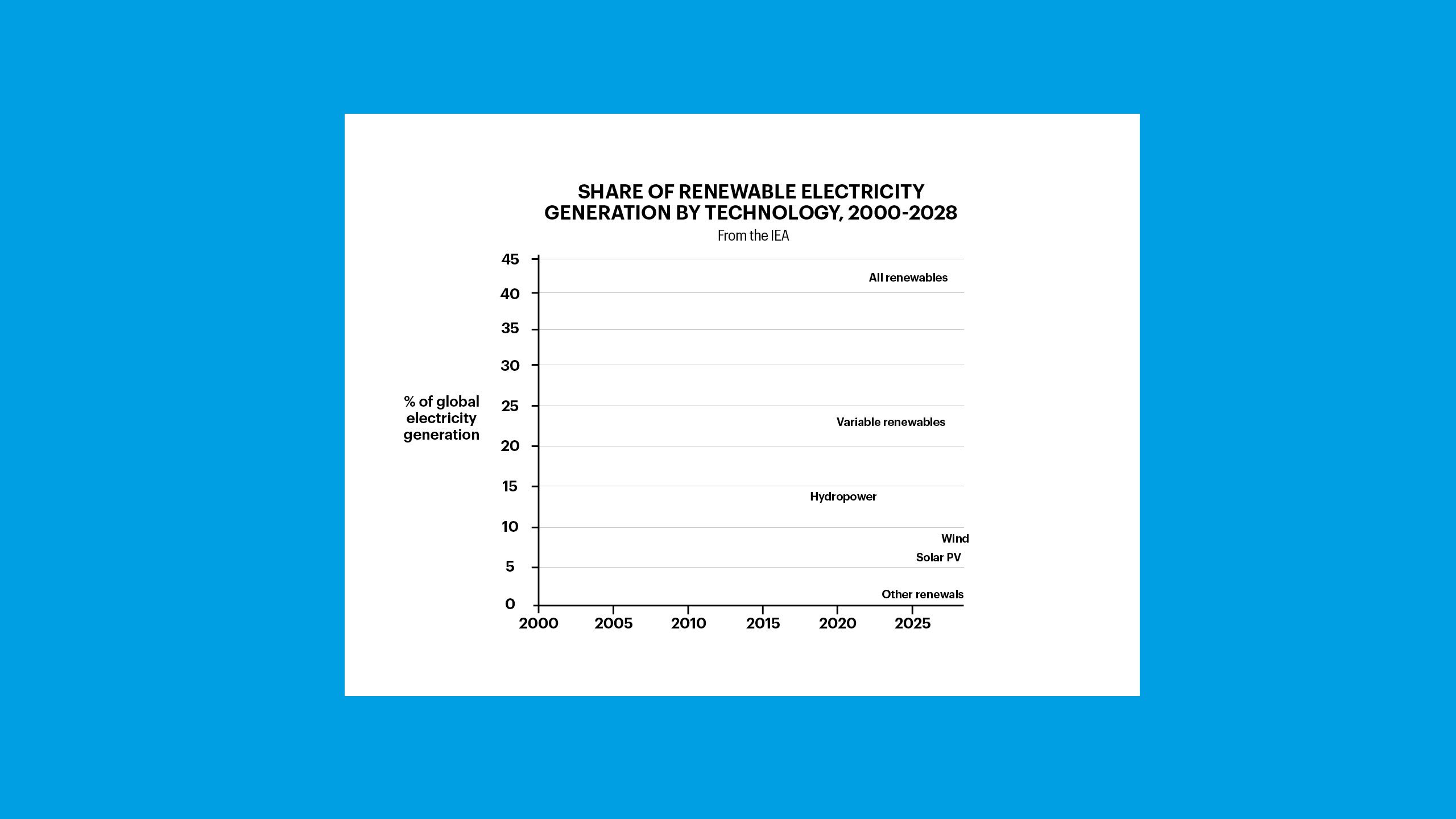
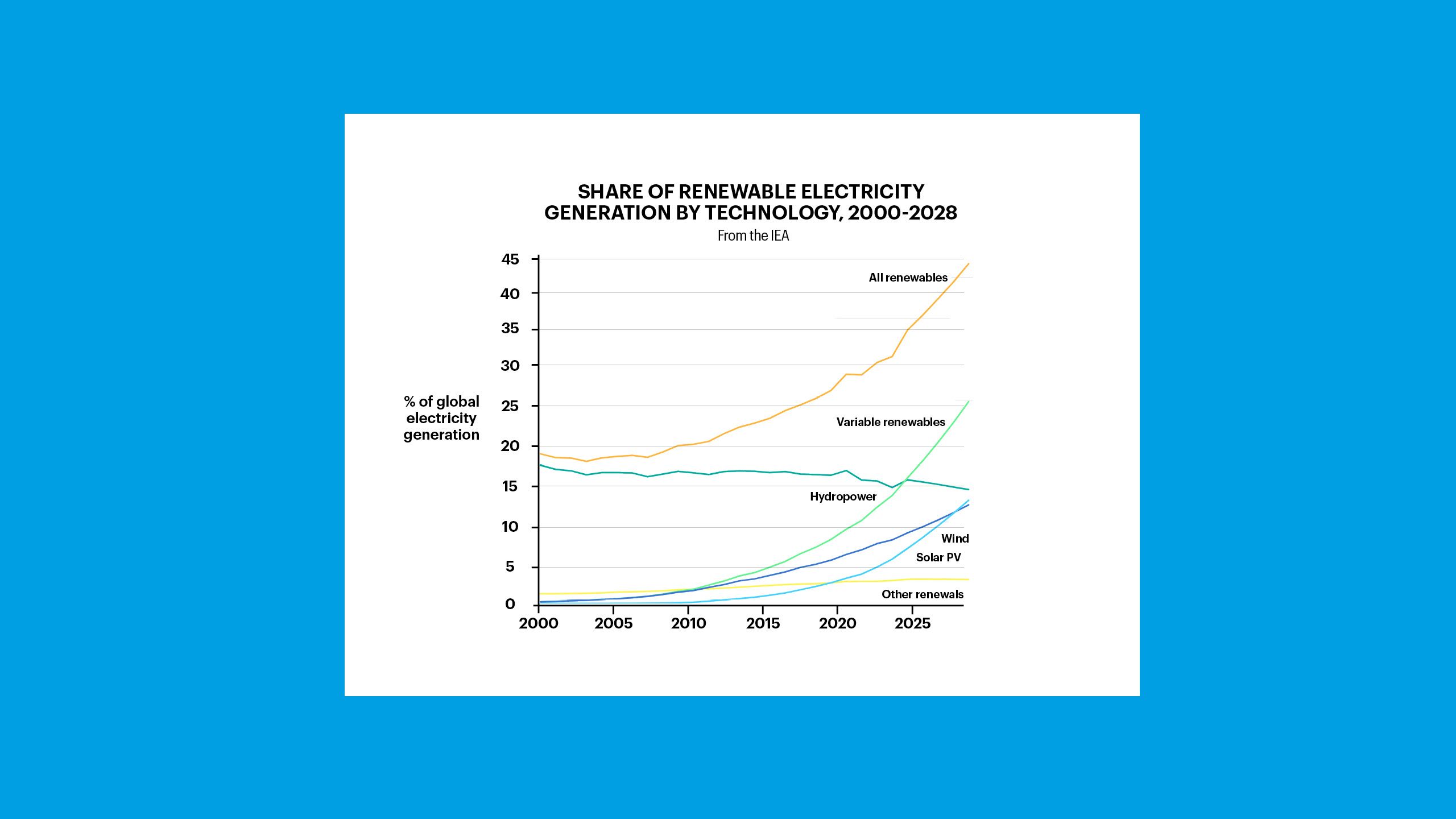
Harnessing nature
Some of the most exciting developments are coming from the ability to harness the power of nature for good, particularly in a world already changing due to global warming. Summers are becoming more intense, with punishing heat and sun, while winds are whipping around our planet at a faster rate.
That is causing more natural disasters – the UN's climate body, the Intergovernmental Panel on Climate Change (IPCC), has tracked an increase in heavy rainfall events that have simultaneously become more intense over most land regions thanks to higher temperatures brought about by human activity.
Yet it also provides an opportunity to try and capitalise on that negative change and turn it into a positive by keeping track of the impacts and developing technology that can turn it into energy.
Take the wind whipping across our planet on a daily basis. Gusts are causing damage to our buildings and infrastructure, but conventional wind turbines can’t always take advantage of them. However, innovations in labs and companies around the world are starting to try and utilise the strength of that wind and to capture it to convert into energy.

Winds of change
The Wind Panel is one example of a company utilising new innovations in turbine design to try and capture and convert that wind into energy. Their ground-breaking wind power generation technology addresses the limitations of conventional wind turbines by capturing powerful turbulent gust winds found at lower levels. These ground-level winds are a largely untapped source of clean energy that can add to the energy mix, but cannot be captured by the rotary elements in conventional wind turbines.
The Wind Panel’s turbines are ducts that contain aerofoils that oscillate independently when exposed to the kinetic energy of wind. These mechanical oscillations are then converted to energy. The small size of the objects means they can be installed in urban areas, rather than being confined to the countryside or offshore installations miles from the ultimate destination for the energy, making them more useful for people and resulting in less energy loss.
Below the surface lie opportunities to permanently alter our energy mix for the better. Companies like Gravitricity are planning for the future of energy where we store energy underground, ready to deploy when it’s needed. GraviStore is its gravity energy storage system, which works by raising and lowering heavy weights in underground shafts. It combines the best elements of lithium-ion batteries as well as pumping hydroenergy storage.

Sunny days ahead
However, it’s in the skies above us that some of the greatest potential for future renewable technologies lies. The Sun beats down on our planet’s surface every day, and utilising the energy that comes from it could help increase capacity for energy in our networks. Naked Energy’s solar thermal collectors can generate electricity and heat water three-to-four-times more efficiently than traditional solar PV panels, says Williams.
“One of the most exciting areas of development is in solar heat technology,” he says. “It’s widely used across the continent, and is becoming increasingly popular in the UK as it gets more efficient and cost-effective.” He points to stats showing that the UK market for solar heat tech grew 69% in 2023.
Solar power of all types is being considered because of the increasing temperatures on our planet, caused by harm already done to our ozone layer that allows the Sun’s rays to beam down onto Earth’s surface at higher rates than normal.
To take advantage of that potential, and to look to the future, engineers are also harkening back to what was once considered an outmoded technology. Concentrated solar power, where the Sun’s rays are redirected and multiplied using several mirrors pointing at a single receiver, was seen as too clunky and complicated when first trialled decades ago. But it’s having a renaissance of late.

The United States Department of Energy is spending nearly $100 million to fund 25 separate concentrated solar power projects, while China unveiled its Solar Thermal Plus power plant in Yumen City in late September, which uses concentrated solar power to produce up to 100MW of energy from the Sun’s rays.
The resurgence of concentrated solar is in many ways an engineering innovation, say experts: the tech has more moving parts than standard solar photovoltaic (PV) panel systems, which made it unreliable in the early days of the technology. But better engineering know-how, coupled with strides forward in tech, mean it’s now possible to make those systems more reliable.
They’ll be needed, says Williams. “Heat decarbonisation is an important part of the net zero transition that’s often neglected, even though heat accounts for roughly half of global energy use, with 75% of it still being generated by fossil fuels,” he explains.
However, it won’t be solar or wind alone that helps enact the energy transition we need. The future of renewables will be a complex cocktail of multiple sources working in concert – and a good deal of engineering know-how to make it happen, too.

Want more animated analysis and expertise? Visit the Professional Engineering digital exclusive homepage.

